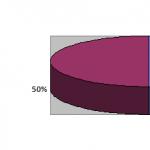One of the most affordable among all types of heating equipment for home and garden are solid fuel boilers - they are also called “solid fuel”. They can be heated with wood, briquettes or coal. They can be installed in any room with the ability to remove smoke and combustion products, as an autonomous heating source, without access to gas or electricity.
What are their main advantages
- Continuity of operation up to several days with one fill of fuel.
- High power with the ability to regulate and rapid heating of the room, boilers with a water circuit are able to heat even the largest areas.
- Models with a burner are used not only as a source of heat, they can be used to boil water and cook food;
- Simplicity and ease of installation, mobility.
- Possibility of equipping with a gas burner or heating elements for using electricity or gas as fuel.
- Automatic or mechanical power control, depending on preference and power access.
What are they made from?
- steel modifications are cheap, compact, great for small spaces.
- Cast iron models are more durable due to the anti-corrosion properties of this metal, have a higher cost, and are larger in size and weight.
When choosing a solid fuel boiler you need to consider
- Power - should be optimal in order to heat a room of the required area.
- Many models operate on several types of solid fuel at once.
- Control - if you do not want to waste time on operation, then you should pay attention to boilers with automatic power control, provided that you have access to the electrical network.
A solid fuel boiler with a water circuit is a self-powered unit that can efficiently heat small apartments and fairly large areas.
Firewood, peat, pallets, coal and eco-peas can be used as an energy source.
The device is ideal for installation in a house that does not have a connection to a central heating system or gas mains.
The main feature of such units is the presence of a water circuit. They can be single-circuit or double-circuit. The former are only capable of heating the room, while the latter are capable of additionally preparing hot water for subsequent use.
Fuel is supplied manually or automatically, depending on the model. If it is automatic, then the boiler has a reservoir for storing raw materials. Fuel can be loaded into the system within a week without assistance.
Such models have a high price, so people prefer to choose a manually laid boiler.
One fill of fuel is enough for 3-4 hours.
To create an image of a solid fuel boiler with a water circuit, it is necessary to consider the principle of its operation:
- Setting the required temperature in the coolant, supplying fuel.
- Heating the heat exchanger in the water circuit.
- The resulting thermal energy accumulates from the walls of the water jacket and the water is heated.
- Regardless of the type of water circulation in the system (natural or forced), the house is filled with heat in a short period of time.

Types of devices
Each device has its own unique technical characteristics.
But all models can be divided into several types, depending on the type of combustion process:
- Traditional. A distinctive feature is that the combustion process occurs from the bottom up. Fuel is loaded manually, combustion products are discharged through the chimney. The boiler does not require electricity to operate.
- Long burning. Features - the combustion process proceeds from top to bottom, fuel is added from above. The unit is designed for uninterrupted operation throughout the day without “topping up.” Due to their complex design, long-burning boilers have a high cost.
- Pyrolysis. Features - the presence of two fuel chambers: the first is intended for the combustion of solid fuel, the second consumes the gas that was formed in the first. Advantages: high efficiency, minimum waste, environmental friendliness. But such boilers require special attention - they are only allowed to be installed in rooms with a humidity of 17-20%.
- Universal. Features: operation on all types of solid fuel. If you change the burner, you can use liquid fuel. The models are equipped with a safety system that prevents spontaneous combustion or interruption of operation.

Advantages and disadvantages
Advantages:
- high build quality, reliability and safety of equipment;
- long service life - some models can last more than 10 years;
- economical fuel consumption, low cost of units and raw materials;
- versatility;
- there is no need to carry out regular technical inspection;
- combustion products are suitable for recycling.
Flaws:
- wood-burning models have low efficiency - no higher than 80%;
- the need to load fuel into manually fed models every 5-6 hours.
How to choose and what to pay attention to?
- Power. Here the buyer should pay attention to the technical characteristics of the model he likes. Manufacturers indicate the maximum power, temperature, and estimated area.
- Principle of operation. The main nuance is the number of contours. Units with one circuit only supply heat to the rooms, while units with two circuits additionally provide a person with hot water for domestic needs.
- Possibilities. The devices are equipped with various systems to control the combustion process and record the required temperature. Some modern models are equipped with hobs on which you can cook food.
- Fuel type and cost. Here it is better for a person to build on personal preferences and financial capabilities. Fuel in the form of coal and wood raw materials is considered economical.

Popular manufacturing companies
Solid fuel boilers from Russian, German, and Italian manufacturers are in high demand.
This is Viessman, Buderus, Ferroli, EVAN, Lemax. Below are models that deserve attention.
Rating of TOP 10 best models
| Place | Name | Price |
|---|---|---|
| TOP 10 best solid fuel boilers with a water circuit | ||
| 1 | 16,000 ₽ | |
| 2 | 19,000 ₽ | |
| 3 | 34,000 ₽ | |
| 4 | 34,000 ₽ | |
| 5 | 54,000 ₽ | |
| 6 | 38,000 ₽ | |
| 7 | 52,000 ₽ | |
| 8 | 12,000 ₽ | |
| 9 | 18,000 ₽ | |
| 10 | 16,000 ₽ | |
The best solid fuel boilers with a water circuit
Lemax Forward-12.5 13 kW
A distinctive feature of the model is the presence of a steel heat exchanger with a long service life.  A single-circuit boiler is designed for heating residential buildings, cottages, and administrative buildings.
A single-circuit boiler is designed for heating residential buildings, cottages, and administrative buildings.
It does not require power from the electrical network.
The type of water heating system does not prevent the device from functioning normally.
Characteristics:
- power - 13 kW;
- Efficiency - 75%;
- fuel - coal, firewood, coke;
- Max. heat exchanger temperature - 95 degrees, water pressure - 2 bar;
- presence of a thermometer;
- type of fuel loading - vertical;
- chimney diameter - 14 cm;
- dimensions - 37x90x58 cm;
- weight - 70 kg;
- warranty - 3 years.
Advantages:
- high level of safety and environmental friendliness;
- impact-resistant heat exchanger, additionally protected by heat-insulating materials;
- the case is made of 4 mm thick steel, which guarantees its strength and reliability;
- easy connection of the unit to the chimney;
- affordable price - from 14,900 rubles.
Flaws:
- there is no system for cleaning the boiler;
- poor ash pan adjustment.
Lemax Forward-20
Single-circuit boiler with vertical fuel loading. Thanks to its high power, it quickly warms up rooms in  room and maintains the set temperature for a long time.
room and maintains the set temperature for a long time.
Attractive appearance allows you to install the device in any place and adapt it to the overall interior.
It is also possible to connect to a water heating system with natural circulation.
Characteristics:
- power - 20 kW;
- does not require electricity to operate;
- combustion chamber type - open, control - mechanical, installation - floor;
- Efficiency - 75%;
- heat exchanger material - steel, max. temperature - 95 degrees;
- fuel - coal, firewood, coke;
- Max. water pressure - 2 bar;
- equipped with a thermometer;
- chimney diameter - 15 cm;
- dimensions - 41x90x58 cm;
- weight - 78 kg;
- warranty - 3 years.
Advantages:
- steel thickness is 4 mm, which affects the durability of the structure;
- convenient download method;
- efficient and fast heating of large rooms, the area of which exceeds 200 square meters. m;
- environmental friendliness of the fuel;
- ease of installation and operation;
- affordable price - from 18,900 rubles.
Flaws:
- not detected.
ZOTA Topol M 20 20 kW
Non-volatile single-circuit boiler with front loading of fuel. It is equipped with combustion doors that  open horizontally and vertically, close with a lock.
open horizontally and vertically, close with a lock.
The heat exchanger is combined with a removable damper, which makes the flue two-way.
Therefore, there is a significant increase in the heating area with prolonged heat transfer.
Characteristics:
- power - 20 kW;
- combustion chamber type - open, control - mechanical, installation - floor;
- Efficiency - 75%;
- type of heating elements - optional, their max. temperature - 95 degrees;
- fuel - firewood, coal;
- Max. water pressure - 3 bar;
- presence of a thermometer;
- chimney diameter - 15 cm;
- dimensions - 44x84.5x97.5 cm;
- weight - 140 kg;
- warranty - 1 year.
Advantages:
- good value for money - the buyer receives a powerful unit for more than 30 thousand rubles;
- easy to use, easy to download;
- the ability to install a gas burner in place of the screw door;
- quick cleaning of the chamber and chimney due to its simple design.
Flaws:
- the need to call a technician if you decide to add other functions to the unit;
- fast fuel consumption: anthracite - 1.3 kg/h, coal - 2.5 kg/h, firewood - 3.3 kg/h.
Carbon 20 20 kW
Single circuit top loading model. Capable of heating rooms up to 200 square meters. m. Does not require connection to  electrical network.
electrical network.
Has a spacious fuel tank, autonomous loading system.
If you use the device correctly, you will be pleased with its functionality and durability.
Characteristics:
- power - 7-20 kW;
- combustion chamber type - open, control - mechanical, installation - floor;
- Efficiency - 80%;
- heat exchanger material - steel, type - optional, temperature - 65-95 degrees;
- fuel - coal, consumption - 5.6 kg/h;
- Max. water pressure - 3 bar;
- presence of a thermometer and pressure gauge;
- chimney diameter - 15 cm;
- dimensions - 46.5x97x105 cm;
- weight - 176 kg.
Advantages:
- long and stable combustion;
- easy cleaning of the boiler;
- a single load of coal is 24 kg, and it lasts for 4-6 hours;
- each structural part is made of durable steel, which determines its service life;
- environmental friendliness and safety.
Flaws:
- requires a certain type of fuel - fine coal;
- the interior of the structure becomes susceptible to corrosion over time due to the formation of sulfuric acid condensate;
- high cost - from 40,000 rubles.
Protherm Beaver 20 DLO 19 kW
A single-circuit boiler is characterized by high performance, the ability to heat a larger area,  the presence of a two-pass cast iron heat exchanger, low electricity requirements.
the presence of a two-pass cast iron heat exchanger, low electricity requirements.
The presence of 4 sections allows you to change the performance and complete the device to the optimal option.
Characteristics:
- power - 19 kW;
- combustion chamber type - open, control - mechanical, installation - floor;
- Efficiency - 90.2%;
- fuel - coal, firewood;
- heat exchanger temperature - 30-85 degrees;
- Max. water pressure - 4 bar;
- chimney diameter - 15 cm;
- dimensions - 44x93.5x64 cm;
- weight - 230 kg;
- warranty - 2 years.
Advantages:
- simple durable design made of cast iron;
- the presence of a spacious combustion chamber;
- after prolonged use, the unit retains its appearance and performance;
- fast heating of rooms, maintaining the set temperature for a long time.
Flaws:
- the massiveness of the boiler, making it difficult to move and install;
- high cost - from 60,000 rubles.
Kentatsu ELEGANT-04 27 kW
The floor-standing single-circuit boiler is suitable for installation in rooms with any circulating heating system.  Does not require connection to the electrical network, can act as an independent heat source or as an addition to another type of boiler.
Does not require connection to the electrical network, can act as an independent heat source or as an addition to another type of boiler.
All structural elements are made of cast iron, with the exception of control levers.
The model is worthy of attention and has good value for money.
Characteristics:
- power - 27 kW;
- combustion chamber type - open, control - mechanical, installation - floor;
- fuel - coal, firewood;
- coolant temperature - 90 degrees;
- Max. water pressure - 4 bar;
- presence of a thermometer;
- chimney diameter - 18 cm;
- dimensions - 45x94.7x70.9 cm;
- weight - 198 kg;
- warranty - 2 years.
Advantages:
- easy operation and cleaning of the chamber and chimney;
- ease of temperature adjustment;
- fast heating, efficient heat transfer;
- supplied assembled;
- affordable price - from 38,000 rubles.
Flaws:
- not detected.
Buderus Logano S111-2-16 16 kW
Single-circuit boiler with top-loading fuel that does not require electricity to operate. The structure is made of  impact-resistant steel, effectively maintaining heat in all rooms.
impact-resistant steel, effectively maintaining heat in all rooms.
The power of the unit is sufficient for heating private and country houses, apartments, offices, and service premises.
Characteristics:
- power - 16 kW;
- combustion chamber type - open, control - mechanical, installation - floor;
- Efficiency - 76%;
- fuel - coal (recommended by the manufacturer), coal and wood briquettes, firewood, coke;
- fuel consumption - 6.4 kg/h;
- coolant temperature - 65-95 degrees;
- water pressure - 3 bar;
- equipped with a thermometer and pressure gauge;
- chimney diameter - 14.5 cm;
- dimensions - 60x87.5x73 cm;
- weight - 160 kg;
- cost - from 54,000 rubles.
Advantages:
- duration of the combustion process;
- easy access to the fuel supply chamber;
- durable design that is not subject to any damage;
- easy installation, delivered assembled.
Flaws:
- not detected.
EVAN WARMOS TK-12 12 kW
Single-circuit steel boiler designed for heating small spaces. Distinctive feature  consists in the cylindrical shape of the body, which ensures the greatest strength of the unit.
consists in the cylindrical shape of the body, which ensures the greatest strength of the unit.
The firebox is equipped with a wide door, making it easy to load fuel and then clean it.
Characteristics:
- power - 5-12 kW;
- combustion chamber type - open (capacity 50 l), controls - mechanical, installation - floor;
- heated area - 80 sq. m;
- Efficiency - 70%;
- fuel - coal, firewood, peat, max. firewood length - 55 cm;
- coolant temperature - 95 degrees;
- water pressure - 2.5 bar;
- equipped with a thermometer;
- chimney diameter - 11.4 cm;
- dimensions - 44x62x93 cm;
- weight - 59 kg;
- warranty - 1 year.
Advantages:
- high level of strength and durability;
- rapid heating of the room, with long-term maintenance of the set temperature;
- good value for money - the buyer purchases high-performance equipment at a very reasonable price (from 15,600 rubles);
- ease of cleaning and maintenance.
Flaws:
- not detected.
Teplodar Cooper Praktik 20
The single-circuit steel model is designed for heating rooms with an area of up to 200 square meters. m. Heat exchanger made of  steel is designed for a long service life and maximum heat transfer.
steel is designed for a long service life and maximum heat transfer.
The main difference is the simple design with an attractive design.
Characteristics:
- power - 20 kW;
- combustion chamber type - open, control - mechanical, installation - floor;
- type of heating element - preinstalled, power - 6 kW, temperature - 50-95 degrees;
- water pressure - 1 bar;
- equipped with a thermometer;
- chimney diameter - 15 cm;
- dimensions - 49x69x69 cm;
- weight - 82 kg;
- warranty - 3 years.
Advantages:
- low price - from 18,000 rubles;
- spacious firebox;
- fast heating;
- the ability to install a draft regulator;
- it is permissible to insulate the side walls;
- high build quality, durability and strength.
Flaws:
- not detected.
Teplodar Kupper Praktik 14 14 kW
The single-circuit boiler has become famous for its durability and low electrical requirements. The model is different from  previous power indicator and maximum heating area - up to 140 sq. m.
previous power indicator and maximum heating area - up to 140 sq. m.
The attractive appearance allows you to install the structure anywhere in the room.
Characteristics:
- power - 14 kW;
- chamber type - open, control - mechanical, installation - floor;
- type of heating element - preinstalled,
- material - steel,
- power - 6 kW,
- temperature - 50-95 degrees;
- fuel - coal, firewood, peat briquettes;
- water pressure - 1 bar;
- presence of a thermometer;
- chimney diameter - 11.5 cm;
- dimensions - 42x65.5x63 cm;
- weight - 68 kg.
Advantages:
- affordable price - from 15,000 rubles;
- excellent for heating private and country houses;
- simple use, easy installation;
- quick cleaning of the chamber and chimney;
- maintaining cleanliness in the room.
Flaws:
- not detected.
Conclusion and conclusions
Solid fuel boilers with a water circuit are a good buy for people whose house is not connected to central heating. The units will also be an excellent solution for heating country houses.
If you choose wisely, you can get an effective and high-performance device with a long service life.
Useful video
From the video you will get an overview of a solid fuel boiler with a water circuit:
In contact with
One of the popular units for creating a heating system for a private home remains a long-burning solid fuel boiler using wood. It is especially convenient for heating a large building to which it is impossible to supply main gas.
Modern units with a long-burning design are able to operate autonomously for many hours, which simplifies the operation of the heating system. But in order to choose the right boiler that will fully meet your heat needs, you need to at least roughly understand its structure and operating principle. In addition, when choosing, many specific criteria are taken into account, which are also important to remember.
Why is a wood boiler sometimes the best option?
Of course, gas units are recognized as the best option both in terms of ease of use and cost of energy. But, unfortunately, not all populated areas of the country (and this is especially true in rural areas) are covered by gasification. In addition, supplying gas to a house, even if there is a central pipeline, is a rather difficult and costly task associated with the preparation of numerous documents. Obtaining all permits and approvals, drawing up a project, as well as purchasing everything necessary for connecting an individual gas supply line will require a lot of time, nerves, and money.

Electric heating units, it would seem, can be used to heat any building to which electricity is supplied. Such boilers are easy to install, adjust and operate. However, their use also has its pitfalls.

For example, to install high-power devices (above 7÷9 kW), a three-phase power line is required. And this is again trips to the authorities, drawing up a project, its approval, approval and other “joys”. Another factor that cannot be ignored is the high cost of electricity, and it is growing every year. Therefore, paying for heating using an electric boiler can become an unbearable burden for the family budget.
In addition, it is necessary to remember that if during an emergency there is a power outage, the house will be left not only without light, but also without heating.
The logical conclusion is that if it is impossible to use gas, a solid fuel boiler is more reliable and profitable for heating a private home. Moreover, heating homes with wood has been traditional for many decades, since there is no shortage of this fuel. Particularly problems do not arise in regions rich in forests, where there is always enough dead wood. And purchasing ready-made firewood for the heating season will cost much less than paying for electricity.
That is why, even after installing gas heating equipment, many owners of old houses are in no hurry to get rid of stoves and fireplaces, which are maintained in working order “just in case.”
However, a stove is not an option that can heat large areas of the house. Therefore, in order to achieve comfortable temperatures, several stoves had to be installed in the building, which were heated several times a day. Of course, this is not only difficult, but also extremely uneconomical.

This discomfort is eliminated by creating a full-fledged heating system powered by a long-burning solid fuel boiler, which allows the entire house to be supplied with heat from one place. Unlike a conventional stove, such units are capable of operating from one load of fuel for up to 12 hours or even more. Thus, such a boiler will require attention twice a day, when the required amount of firewood is put into the firebox.
By the way, there are also models of solid fuel units that can operate on one load of fuel for a day or more.

The advantage of solid fuel boilers is that almost all models can operate not only on wood, but also on other types of solid fuel. For this purpose, pellets, peat briquettes, as well as so-called “euro firewood” are produced from wood waste on an industrial scale.
Some types of coal are also used as fuel for these units, however, not all models are designed for it. Therefore, if you plan to use coal for heating, you should choose the appropriate model after studying its characteristics when purchasing.
Design and operating principle of long-burning heating boilers
To understand how the boiler functions, as well as to facilitate the process of its future maintenance, you need to familiarize yourself with the design and principle of operation.
The principle of long burning is that, firstly, such boilers have a very voluminous firewood loading chamber. And secondly, that fuel combustion does not occur immediately, but is broken down into two stages.
- Firewood (or other solid fuel acceptable for this model) is placed in the combustion chamber. This compartment should be filled to almost its entire volume. Only at the loading window itself do they try to lay out thin logs, wood chips, branches, etc. – to facilitate initial ignition.

- Next, using a torch or paper, the fuel supply is ignited. At this stage, a sufficient amount of air is supplied to the chamber, necessary for intense combustion to occur.
- Once the fuel is ignited, the supply of air to this primary combustion chamber is reduced to a minimum. Thanks to this, the usual active burning of wood stops and goes into the stage of thermal decomposition, in other words, smoldering.
- Under such conditions, smoldering wood, during its decomposition, releases very significant volumes of combustible gases with high energy potential. This process is called pyrolysis, and the gases themselves (which are dominated by methane) are accordingly often called pyrolysis.
- If in conventional furnaces the resulting pyrolysis gases simply go into the chimney, then in long-burning boilers they enter a specially designed afterburner chamber. Here, under the influence of high temperature and excess supplied oxygen (air), the gas mixture ignites and completely burns out with a very significant release of heat. As a result of the complete cycle, there is practically no waste left from the firewood, since its solid component is destroyed by smoldering to the smallest ash, and the gaseous component burns out intensively in the afterburner. This in total determines the high heat transfer of the boiler and its high efficiency.
It is the formed pyrolysis gases that are the main source of thermal energy, and it is their afterburning chamber that accounts for the main part of the water circuit heat exchanger. Although, of course, heat extraction begins in the primary combustion chamber.
You may be interested in information about what characteristics it has
To make it more clear how such boilers are approximately arranged, you can consider the following diagram:

1 – boiler body with a reliable layer of thermal insulation.
2 – firewood loading window with a tightly closing door.
3 – chamber of primary thermal decomposition of wood (pyrolysis).
4 – ash pit in which unburnt waste is collected.
5 – channel for dosed supply of primary air necessary to ensure smoldering of firewood
6 – channel for supplying secondary air, necessary for complete afterburning of bleached pyrolysis gases.
7 – afterburning chamber of pyrolysis gases.
8 – pipe for connecting the boiler to the chimney to remove combustion gases.
9 – pipe for connecting the return pipe of the heating circuit.
10 – pipe for connecting to the heating circuit supply pipe.
11 – additional heat exchanger, which is often used to connect the indirect heating boiler of a home’s hot water supply system
Of course, such a scheme is not at all some kind of dogma. The number of models offered for sale is large, and the layout can have very significant differences. In particular, the structure of the loading chamber, the direction of combustion of the fuel fill, and the location and design principle of the secondary afterburning chamber of pyrolysis gases may differ. Each model has its own “water jacket” design or additional heat exchangers. But the principle of operation of the boiler still remains similar.
Before you start using the selected model, you must carefully study the diagram of its design, which is necessarily included in the documentation accompanying this heating device.
You might be interested in learning about the benefits
Types of designs of long-burning solid fuel boilers
From the information presented above, it is already clear that the main task when operating boilers of this design is to achieve the correct dosage of air flows: primary air entering the fuel chamber, and secondary air, which is responsible for the high-quality complete combustion of pyrolysis gases.
Models from different manufacturers solve these problems in different ways. That is, the design of boilers can be equipped with additional devices that balance the processes taking place.
Prices for solid fuel boilers
solid fuel boilers
Forced air boilers
One of the design options is boilers with a built-in fan, which is used to pump air. The distribution of air flows among the chambers through internal channels is carried out using an automatic control unit.

Almost all boilers equipped with fans are arranged in such a way that the main loading chamber is located in the central part of the structure.
Thanks to the presence of a fan, the fuel quickly flares up, and the heat-resistant materials with which its internal walls are usually lined (ceramic concrete or fireclay) perfectly accumulate heat. The draft created in the furnace constantly supplies the pyrolysis gas released by the fuel to the afterburner chamber, which in some models is located at the bottom. At the entrance to this space, special ceramic nozzles are installed that can withstand temperatures reaching up to 1000 degrees.
When burned, pyrolysis gases heat the water jacket pipes. In turn, installed in the heating circuit and also connected to the automatic unit, it ensures the required intensity of coolant movement throughout the entire heating system.
In some models of solid fuel boilers, the afterburner may be located in the rear or upper part of the boiler structure.

If the afterburning chamber is located at the rear of the boiler, it has a rather complex design of heat exchange elements, which facilitates rapid heating of the coolant. Thanks to this, high efficiency of the device is achieved, sometimes reaching 90÷95%.
Such designs of electronically controlled boilers have a large number of advantages, but they also have their own significant drawback - they are energy dependent. In the event of a power outage, the fans, pump, and naturally, the entire automatic unit do not function, which leads to a suspension or complete stop of the movement of coolant through the heating circuit. If power outages are not uncommon for the area where the house is located, then it is necessary to have an autonomous power supply system - this could be an electric generator, which must always be kept in a state of full readiness. UPS, uninterruptible power supply units specially designed for this purpose, help prevent infrequent and not too long interruptions.
Another serious disadvantage of a boiler with an electronic control system is its high sensitivity to voltage changes. Therefore, it is necessary to provide them with protection by installing a separate voltage stabilizer.
Voltage stabilizer - guarantees correct operation of the boiler electronics
You shouldn’t waste money on this device - its cost is not comparable to the cost of a boiler full of electronics, and skimping on such precautions can result in much higher costs! How to choose - read in a special publication on our portal.
Non-volatile heating devices
To avoid dependence on the stability of the power supply, it is worth choosing long-burning units with natural air draft and equipped with a mechanical control system. There are many such models on the market. For example, these are familiar boilers from a domestic manufacturer called “Bourgeois-K” or “Trayan”.

Prices for solid fuel boiler "Burzhuy-K"
These devices have a volumetric fuel chamber located in the lower part of the structure, under which there is a blower, which simultaneously serves as an ash pit. The damper for air access, located at the bottom of the door, is connected by a chain to the thermostat.
When igniting firewood loaded into the firebox, it is necessary to open the damper as much as possible to ensure active combustion of the fuel and start the pyrolysis process. To achieve it, a temperature of at least 200 degrees is required.
After a fire, the damper should be closed, reducing to a minimum the access of oxygen to the fuel chamber, transferring the combustion to the smoldering stage. Further, as already described above, pyrolysis gases are released, which enter and ignite in the afterburner.
Thanks to this design, the heating device is completely energy independent, so even in the absence of electricity, the house will continue to be supplied with heat.
This type of boiler is inferior in efficiency and fuel economy to energy-dependent devices, however, it is its independence from the availability of electricity that makes it popular among consumers. In addition, you will also not have to pay for energy consumption, which will also help save on the operation of the heating system as a whole.
Solid fuel boilers with top combustion
Another design option for heating units is the original technological systems with the direction of wood burning from top to bottom. A similar principle is used not only in many models of solid fuel boilers, but also in stoves operating on the principle of long combustion.
Boilers with top ignition, as a rule, have the shape of a cylinder located vertically. Almost all types of solid fuel are suitable for this type of heating units - firewood, briquettes, coal, wood chips, sawdust, etc. The chamber in such boilers has a very large volume, which allows them to operate on one fuel load for a long time: this duration depends on the specific model and fuel type. For example, some of them are capable of working with wood from 24 hours to three days, and when using coal - even from three to seven days.

The operating cycle of such a boiler can be represented in the following order:

So, such a boiler has a cylindrical vertical body (item 1).
Through a special door (item 2) the selected fuel (item 3) is loaded into the chamber. At the very bottom there is a door (item 4), which serves to clean the chamber from ash before the next loading.
If firewood is used for heating, then large-diameter logs are laid down and in the middle of the stack, and wood chips are loaded around them and on top. Then, using paper, the top thin wood is ignited. To ignite fuel, you can use liquids specially designed for igniting stoves.
In the upper part of the housing there is an air supply channel (item 5) to the boiler, equipped with a valve. The valve can be manual or semi-automatic, operating on the principle of changing the configuration of a bimetallic plate under the influence of temperature. Air from this channel enters the heating chamber (item 6), where it is heated under the influence of the heat generated by the boiler.
As soon as surface burning of the wood begins, a special air distributor (pos. 7) is lowered onto the stack. This is a rather massive part made of a metal profile, inside of which there are channels for uniform distribution of air over the surface of the burning fuel. With its weight, the distributor rests on the burning bookmark, and as it burns out, it gradually falls down. To do this, it is connected to the air heating chamber by a pipe of a special telescopic design (item 8).
The air heating chamber has a damper (pos. 9), which regulates the flow of secondary air into the upper part of the combustion chamber (pos. 10).
Pyrolysis gases released during the smoldering of the top layer of the fill rise to the upper part of the fuel chamber, where they meet the flow of hot secondary air coming from above. That is, all the necessary conditions are created for their complete afterburning with a large release of heat. After this, gaseous waste is discharged through the pipe (item 11) into the chimney.
The generated heat is transferred to the water jacket of the boiler (item 12), which is connected to the heating circuit of the system through the return (item 13) and supply pipes (item 14).
As you can see, in fact, in this design there is no obvious division into a chamber for preliminary combustion of wood and final combustion of gases - the total space is divided into these zones by the position of the air distributor, and the sizes of these zones change as the unit operates.
Such boiler models can also be equipped with a built-in fan, which provides forced air supply. However, even their work can be carried out in the presence of only natural traction. Therefore, the heating of the house will work even in the absence of electricity.
This design has shown its effectiveness, so some home craftsmen take it as a basis when creating their own products. A striking example of this is the popular wood-burning stove with the unusual name “Bubafonya”.
You may be interested in information about what is involved in a heating system
A short overview of long-burning solid fuel boiler models
This section will consider several popular models of solid fuel boilers among Russian consumers, which have proven themselves to be reliable and easy-to-use heating devices.
Solid fuel boiler “Stropuva S40P”
The heating boiler “Stropuva S40P” is a model of the Lithuanian company “STROPUVA”, designed for heating fairly large areas and capable of burning coal, wood, as well as wood and peat briquettes.

The boiler has a top-burning design and consists of two cylinders, one of which is located inside the other. The space between the cylinders is, in fact, a water jacket, that is, a heat exchanger for the coolant of the heating system. The inner cylinder contains a volumetric combustion chamber, into which air, which supports surface combustion of the fuel fill, is automatically supplied through a telescopic distributor. As the fuel burns, the distributor lowers, creating optimal conditions for its smoldering. In the upper part of the chamber, the final combustion of pyrolysis gases occurs.
The boiler has a cyclic operating mode; fuel is loaded into the combustion chamber manually.
Due to its shape, the unit has compact dimensions in plan, but has a considerable height - 1900 mm. Therefore, the room for its installation must have a sufficiently high ceiling.
Technical characteristics of “Stropuva S40P” are determined by the following parameters:
| Parameter name | Indicators |
|---|---|
| Boiler type | |
| Type of fuel used | firewood, coal, briquettes, Eurowood, pellets |
| Number of circuits | one (heating only) |
| power, kWt | 40 |
| 400 | |
| Efficiency, % | 85 |
| Presence of a fan for air injection | There is |
| Built-in circulation pump | No |
| 60 | |
| 95 | |
| 1.5 | |
| steel | |
| Chimney diameter, mm | 200 |
| Thermometer | There is |
| Control type | mechanical |
| Energy dependence | Yes |
| Availability of safety valve | There is |
| Device weight, kg | 308 |
| 2120×680×680 |
The average cost of the device for 2018 is 105,000 ÷110,000 rubles.
You might be interested in information about what they are
Solid fuel boiler "Buderus Logano G221-20"
The Buderus Logano G221-20 model is a solid fuel boiler made in Germany, characterized by high stability and operational reliability. The heating device can operate on different types of fuel - wood, coal, briquettes and coke. The use of more heat-intensive types of fuel is permissible, since the boiler is equipped with a cast iron heat exchanger.

The features of the solid fuel boiler “Buderus Logano G221-20” include the following:
- Large loading volume of fuel and ash chamber.
- The ability to reinstall the firebox door to the other side - sometimes this needs to be done for ease of use.
- Easy access to cleaning the combustion chamber and ash chamber.
- This boiler model can be easily integrated into an existing heating system, for example, as a backup heating source.
A whole line of solid fuel heating devices “Buderus” of the “Logano G221” series with different technical characteristics is supplied to the Russian market. Therefore, from them you can choose a unit that has the required heating power for both residential and industrial buildings.
The technical characteristics of the Buderus Logano G221-20 are as follows:
| Parameter names | Indicators |
|---|---|
| Boiler type | long burning solid fuel boiler |
| Type of fuel used | firewood, briquettes, “eurowood”, coal, coke. |
| Number of circuits | one (heating) |
| power, kWt | 20 |
| Maximum heated area, m² | 200 |
| Efficiency, % | 78 |
| Coke consumption, kg/h | 3.9 |
| Coal consumption, kg/h | 3.6 |
| Firewood consumption, kg/h | 5.6 |
| Maximum coolant temperature, ˚С | 90 |
| Maximum pressure in the heating system circuit, bar | 4 |
| Primary heat exchanger material | cast iron |
| Chimney diameter, mm | 150 |
| Thermometer, pressure gauge | There is |
| Control type | mechanical |
| Energy dependence | Yes |
| Device weight, kg | 210 |
| Linear parameters (height, depth, width), mm | 1370×820×605 |
The average cost of such a device for 2018 is 110,000÷115,000 rubles.
You might be interested in information on how to choose a wood burning stove
Solid fuel boiler “Protherm Beaver 50 DLO”
"Protherm Bober 50 DLO" is a long-burning boiler made in Slovakia, made of cast iron. The device is intended for heating both residential and industrial facilities.

The efficient operation of the heating device is guaranteed with high-quality installation, as well as with regular maintenance throughout the entire period of operation. The Protherm Beaver 50 DLO boiler is designed to operate in a system with both natural and forced coolant circulation. Therefore, this model can easily function even in the complete absence of power supply.
Thanks to the cast iron heat exchanger, the sections are heated evenly, which increases the boiler efficiency up to 90%.
The housing is equipped with a cooling circuit that prevents the coolant temperature from rising above 110 degrees.
Foil-coated mineral wool was used as housing insulation, which helps to increase the heat capacity of the unit and the safety of its operation.

The device is equipped with a special thermostat, the regulator of which is located on its cover. The required temperature regime is set manually.
Technical characteristics of "Protherm Beaver 50 DLO" are shown in the table:
| Parameter names | Indicators |
|---|---|
| Boiler type | long burning solid fuel boiler |
| Type of fuel used | |
| Number of circuits | one (heating) |
| power, kWt | 35 |
| Maximum heated area, m² | 265 |
| Efficiency, % | 90 |
| Maximum coolant temperature, ˚С | 85 |
| Minimum coolant temperature, ˚С | 30 |
| Maximum pressure in the heating system circuit, bar | 4 |
| Primary heat exchanger material | cast iron |
| Chimney diameter, mm | 150 |
| Thermometer, pressure gauge | There is |
| Control type | mechanical |
| Energy dependence | No |
| Device weight, kg | 380 |
| Linear parameters (height, depth, width), mm | 935×740×440 |
The average cost of the device for 2018 is 95,000 ÷ 105,000 rubles.
You might be interested in information on how to choose
Long-burning solid fuel boiler "Teplodar Kupper OK30"
The unit, produced by a domestic manufacturer, is especially popular for use in private sector residential buildings with a small area. Its demand is explained not only by its high technical characteristics, but also by its affordable price.

“Teplodar Cooper OK30” has compact dimensions, so it does not take up much space, and you do not have to build a separate roomy room for it. The device is able to effectively heat the coolant within 20 minutes from the start of the fire, which ensures that the rooms reach a comfortable temperature in a short time. The advantage of this heating unit is that it can operate on any solid fuel, and if necessary, it can also be converted to electricity or natural gas - it is possible to install standard modules.
In practice, it has been verified that the optimally long operating life on one bed of this model is achieved by using two types of fuel simultaneously. For example, firewood is first placed horizontally into the combustion chamber, it is ignited, and then coal is added through the upper loading channel.
The technical characteristics of Teplodar Cooper OK30 are summarized in the table:
| Parameter names | Indicators |
|---|---|
| Boiler type | long burning solid fuel boiler |
| Type of fuel used | firewood, briquettes, “Eurowood”, coal. |
| Number of circuits | one (heating) |
| power, kWt | 30 |
| Maximum heated area, m² | 300 |
| Efficiency, % | 90 |
| Water circuit volume, l | 50 |
| Maximum coolant temperature, ˚С | 95 |
| Minimum coolant temperature, ˚С | 30 |
| Maximum pressure in the heating system circuit, bar | 2 |
| Primary heat exchanger material | steel |
| Chimney diameter, mm | 150 |
| Thermometer, pressure gauge | There is |
| Control type | mechanical |
| Energy dependence | No |
| Device weight, kg | 145 |
| Linear parameters (height, depth, width), mm | 1000×645×420 |
The average cost of the device for 2018 is 24,000 ÷ 30,000 rubles.
You may be interested in information about what characteristics it has
To summarize - a few words about the advantages and disadvantages of wood-burning boilers
So, despite the wide range of appliances that use other types of fuel, wood boilers do not lose their popularity. Manufacturers are constantly improving their products, supplementing them with innovative solutions that simplify the operation process and increase the efficiency of the units. Thanks to this, many of the models can compete with electric and gas appliances.
Advantages Such equipment can be considered the following:
- Long-burning solid fuel boilers have a high efficiency, which in some models reaches 95%, since thanks to the afterburning system, the loss of the energy potential of the fuel used is practically reduced to a minimum.
- The devices can be called environmentally friendly, since natural resources are used for their combustion, the emissions from which are well processed by plants.
- The autonomy of most boilers makes them independent of the availability of electricity.
- When installing units of this type, there is no need to go through lengthy procedures to obtain various permits and approvals.
- Solid fuel boilers can also have a double-circuit circuit, which will not only heat the premises of the house, but also supply the family with hot water. If this function is not provided for in the design of the unit, then it is easy to connect an indirect heating boiler to it.
- These devices are designed for a very long service life, measured in decades. They are unpretentious in operation and maintenance.
TO shortcomings solid fuel heating devices include the following factors:
- The devices require constant monitoring of operation, as well as timely loading of fuel into the combustion chamber.
- Mandatory cleaning of the fuel and ash chamber from combustion products is required before the next operating cycle.
- The need to install a high-quality ventilation system in the room where the boiler is installed, and a well-thought-out chimney design.
- Almost all wood-burning boilers are large in size, so it is necessary to arrange a separate room for them or allocate quite a lot of space in one of the non-residential areas of the house.
- In addition, you will need an equipped place for storing solid fuel. Before each loading, firewood stored outside must be brought indoors to dry for a certain period. Fuel that is too wet will significantly reduce the efficiency of the boiler, since the pyrolysis process may be incomplete.

The cost of gas and electricity is rising, and saving on heat is impossible in the Russian climate. An alternative option is heating with wood or wood waste. In addition, there are settlements where heating with a wood stove is the only possible option. But old-fashioned stoves are a thing of the past. In order to provide heat economically and safely, it is important to correctly select and install a modern wood-burning boiler.
Design and principle of operation
Long burning wood boiler design
Each heating boiler must have a combustion chamber, a heat exchange element, an ash pan and a chimney. The simplest device is a stove equipped with a water tank. It heats up when wood is burned and is sent to the heating circuit.
Heating equipment operates as follows:
- Firewood is loaded into the combustion chamber, where it burns and gives off heat to the heat exchanger.
- Pipes are connected to the heat exchange device, the purpose of which is to supply hot water to the general heating system. It is equipped with batteries, an expansion tank and pipes. In addition to heating the liquid, the unit heats the room where it is installed.
- When wood burns, smoke appears and is discharged through a pipe into the street. In this case, soot settles on the walls. A significant amount of it in the chimney leads to a decrease in draft and an increase in the risk of fire.
- The supply of cold water and the removal of hot water from the heat exchange element is carried out using pipes. New generation devices are equipped with automatic systems that simplify the maintenance of wood-burning boilers for homes as much as possible.
Chimneys are cleaned using special openings called closed dampers. Brushes and ruffs are used for this purpose. You can also add a composition to the firewood that, when burned, cleans the chimney from the inside.
Advantages and disadvantages

A wood-burning boiler does not depend on electricity or gas supply
Modern boilers for heating with wood for the home are characterized by increased efficiency - about 80 percent. In addition, modern units have many other advantages:
- for installation there is no need to obtain permission from gas workers and firefighters, or to notify neighbors;
- There are modifications that are adapted to work not only on wood, but also on pellets and coal;
- Often the devices are equipped with hobs for cooking or heating food;
- combined devices allow you not only to heat your home, but also to heat water.
The most important advantages are independence from electricity and efficiency. The cost of firewood is approximately half that of natural gas. Heating with electric devices is even more expensive compared to gas.
Wood-burning units also have their disadvantages. In cheap boilers you have to add fuel every 2-4 hours. In addition to the boiler room, a place is required where firewood will be stored.
The performance of wood-burning boilers is influenced by the type and quality of the fuel. If only heating with wood is provided, it is not allowed to use peat briquettes and coal. It is also not allowed to use wood that is not dry enough - when burning, it produces a lot of steam and soot.
Types of wood boilers
 Solid fuel devices are divided according to the type of combustion. Simple boilers have not very high efficiency, and fuel costs are significant. The operation of modern devices is based on the principle of long combustion. It involves limiting the access of oxygen during wood combustion. In fact, the wood smolders rather than burns, producing more heat. It is possible to regulate the allocated power. The peculiarity is that one batch of fuel lasts on average for 20–22 hours, the time depends on the size of the combustion chamber.
Solid fuel devices are divided according to the type of combustion. Simple boilers have not very high efficiency, and fuel costs are significant. The operation of modern devices is based on the principle of long combustion. It involves limiting the access of oxygen during wood combustion. In fact, the wood smolders rather than burns, producing more heat. It is possible to regulate the allocated power. The peculiarity is that one batch of fuel lasts on average for 20–22 hours, the time depends on the size of the combustion chamber.
Models operating using the pyrolysis method are also classified as long-burning equipment. Their difference lies in the separation of fuel into solid residue and pyrolysis gas, which accumulates in the chamber adjacent to the firebox. Due to this, efficiency increases to 85 percent, and ash volume is reduced to 7-15 percent. Gas-generating boilers have only one drawback - chamber-drying fuel is required, otherwise operation of the unit in normal mode will be impossible.
Home boilers are also divided according to the number of circuits that heat water. They are single-circuit and double-circuit.
The first type is intended only for heating rooms. The second is also used for hot water supply. For this purpose, two coils are installed in the combustion chamber.
Single-circuit boilers can also be used to provide home residents with hot water. For this purpose, indirect heating water heaters are connected to them. But there is a drawback - the need to purchase additional equipment.
Criterias of choice

The Kupper boiler is characterized by an optimal price/quality ratio
When choosing a boiler, it is worth considering the following indicators:
- Heated area. Approximate efficiency calculations are performed using the formula 1 kW = 10 sq.m. For example, in the central part of Russia, heating a house with an area of 150 sq.m requires a device with a power of 15 kW. For colder regions, a more powerful unit is needed. To heat a similar house in Siberia, it is worth taking a device with 30 percent more power. When connecting a second water circuit for DHW, you need to add another 15–20 percent to the final value.
- Material. Cast iron equipment can last 35 years and has the best thermal and technical performance. But such units are unstable to mechanical damage and weigh a lot. Steel devices are cheaper, they are not afraid of shocks, but their service life is on average 10–15 years less.
- Firewood loading type. More often, devices are manufactured that provide for lateral fuel supply. But there are also top-loading models. A similar design is used in gas generator boilers. The main advantage of the solution is the possibility of pre-drying the firewood, which increases the heating efficiency.
- The ratio of the volume of the combustion chamber and the power indicators of the boiler - how many times during the day it is necessary to load fuel. For steel devices this value is on average 1.5–2.5 l/kW versus 1.1–1.4 l/kW for cast iron ones.
- Burn protection. An important characteristic, especially with open access to the boiler room. It is achieved through thermal insulation of the combustion chamber handles, other highly heated elements, protecting cases and grates.
- Additional functionality - automatic sensors, built-in storage boiler, remote control system. All this makes the operation of the heater more convenient. But some options require connection to an electrical power source, which deprives the unit of autonomy.
- The wood-burning boiler is mounted on a solid foundation. When connecting a cast iron device, you will need to build a concrete base.
- To prevent accidental ignition during fuel loading, the wooden base in the direction of opening the firebox door is covered with a sheet of metal or asbestos cement.
- The unit is installed in a place where it will be convenient to maintain. All elements must be freely available.
- Firewood should be stored in an adjacent room.
- The installation of the chimney pipe is carried out following fire safety requirements during installation. All parts that heat up and pass through the floor slabs and roof are insulated. A spark arrester is installed at the outlet of the chimney.
In addition to technical indicators, you will need to decide on the brand of wood-burning boiler and the cost. A good option in terms of price and functionality would be one of the modifications of the Kupper boiler. Their advantage is also their compactness, which allows the device to be placed in a small area.
Installation Features

To install a wood boiler you need to prepare a solid foundation
A wood-fired heating boiler can be installed in any location as long as it meets technological and fire safety standards. A technical room with ceilings higher than 2.2 m and an area of 8–12 sq.m. is suitable for the boiler room. Supply and exhaust ventilation and light must be installed. Only non-combustible materials are suitable for interior decoration. You can install the boiler in the basement, but only if it is dry.
When installing you also need to consider:
If the design of the unit requires connection to the electrical network, use a voltage stabilizer and an uninterruptible power supply. The automation is connected from the panel via circuit breakers and RCDs. In general, installation is not difficult; it is quite possible to do it yourself.
Rules for the operation of wood boilers

Firewood should be stored no closer than a meter from the firebox



















